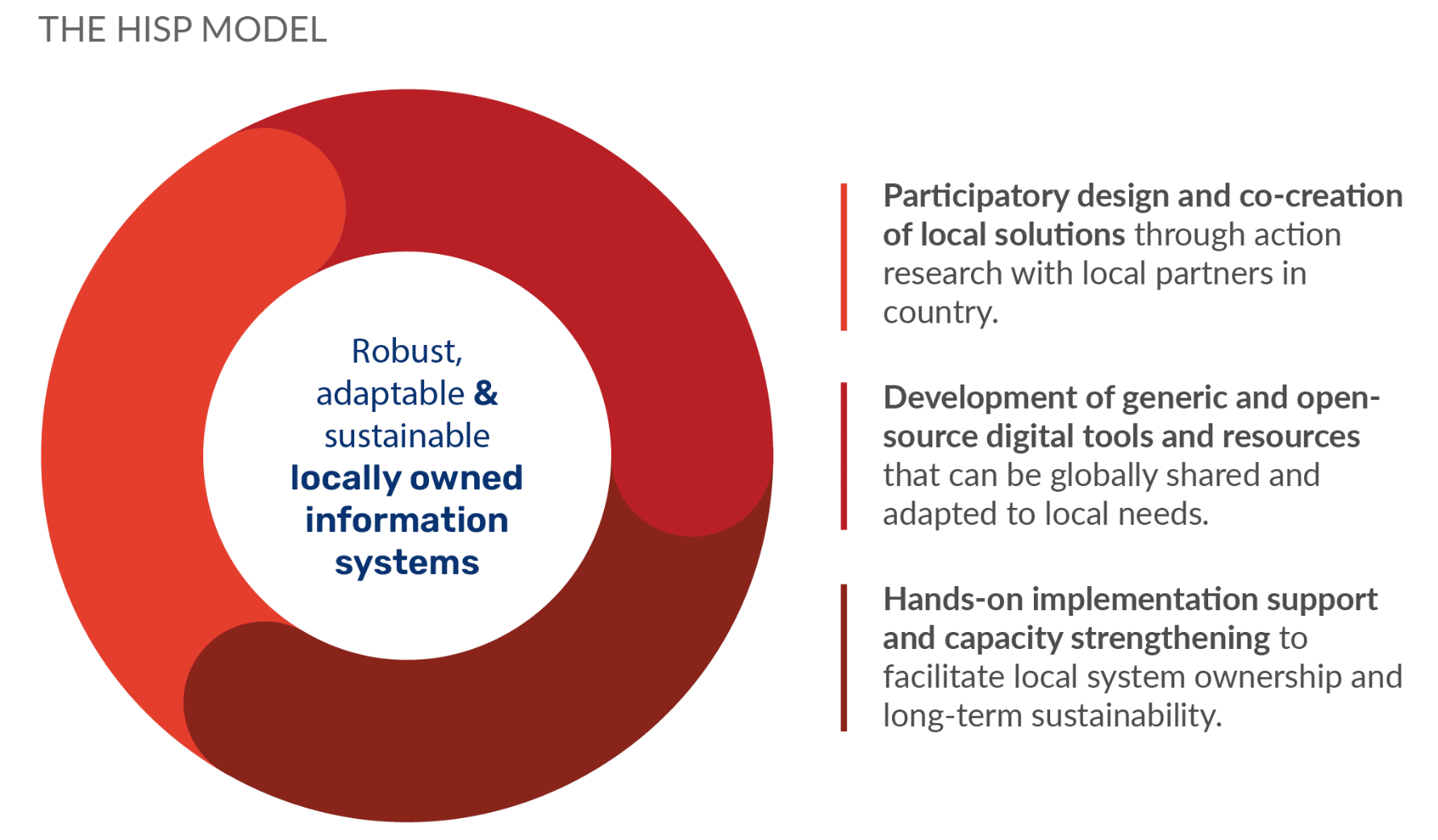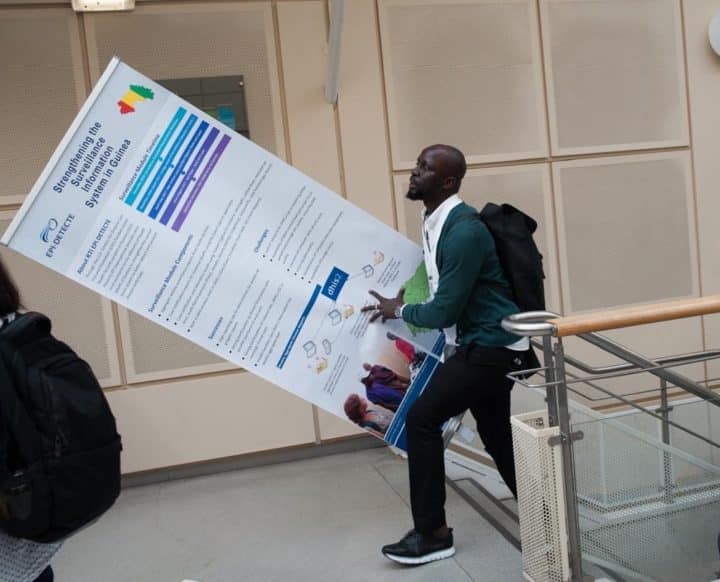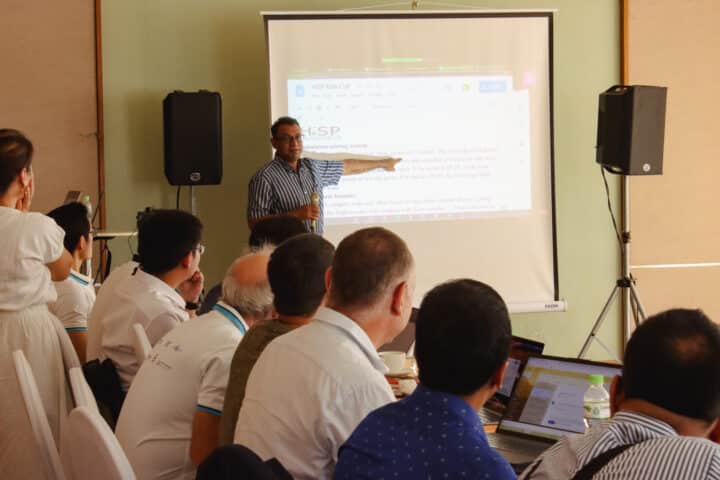The HISP Approach
HISP’s approach to information system design and implementation supports sustainable, locally-owned systems through a combination participatory design through action research with local stakeholders, development of generic open-source software tools, and long-term, local implementation support and capacity strengthening.
Jump to a section on this page
Overview of the HISP Approach
The HISP approach rests on a three-legged model where action research/participatory design, software development, and implementation support/capacity building are all equally important and interrelated activities carried out in collaboration with local partners and with a high degree of focus on good governance and building trust. This approach has been fundamental to HISP since our beginnings in 1994 in post-Apartheid South Africa as a joint project between the University of Oslo and the University of the Western Cape, and has been described as the success formula for the worldwide adoption of DHIS2 and the long-term sustainability of DHIS2 systems and implementations. The HISP approach helps ensure that the software platform we design meets the needs of local users, and supports the development and sharing of local innovations around the world.
You can read more about each of the three pillars of the HISP approach below. It is important to note, however, that while these are described separately, the activities in each pillar do not happen in isolation – instead, they enable and contribute to each other.

Participatory information system design through HISP-led action research
Action research is an integral part of the HISP approach. By action research, we mean exploring real-world problems and developing solutions in a local context, generating knowledge about what elements of the solution are contextual vs. generic, and transforming the generic elements into frameworks that can be shared globally at the same time as they inspire local innovation and adaptation in other countries. These processes of local problem solving and generic platform development occur in parallel, forming a cycle of innovation, country-to-country sharing, and feedback between local stakeholders and the core DHIS2 team at HISP UiO.
HISP researchers also investigate information systems and related concepts, such as Digital Public Goods, that can help increase understanding of these systems and their use. Research is also a core activity of HISP groups, and the collaborations between the HISP network and academic partner institutions in low- and middle-income countries contributes to building DHIS2 capacity and supports the long-term sustainability of DHIS2 systems.
Development of generic software tools that can be adapted to local needs
HISP UiO leads the development of the DHIS2 software platform. Software development is a foundational, ongoing activity to continue to maintain the stability, performance and security of DHIS2 in the face of an ever-growing worldwide user base and increasing performance demands, and to expand the platform functionality to meet new country and partner requirements in health systems. These needs and requests are prioritized through a transparent roadmap process that drives our software release schedule. This development cycle is closely linked to in-country action research and implementation support carried out by HISP groups, which helps identify and analyze local requirements through a user-oriented design practice, field test and provide feedback on new features, and share local technology innovations for potential inclusion into the core DHIS2 platform.
The increasing use of DHIS2 in new domains and use cases – such as education, logistics and climate and health – also leads to new development needs. The value proposition of developing these features within the DHIS2 platform is that they also strengthen the platform for health systems, maximizing investments through the ongoing work of a consistent software team, and that they are immediately available for all users of DHIS2 worldwide.
Local implementation support and capacity strengthen local system ownership
The HISP approach to implementation support centers on strengthening local capacity with the end goal of enabling real local ownership of information systems. HISP UiO coordinates our global work on capacity building – including designing DHIS2 Academy curricula, documentation and other informational and training materials – and builds HISP group capacity on specialized topics. At the same time, HISP groups build and reinforce country capacity by providing regional Academy and in-country training, and offering hands-on learning through an apprenticeship model, instead of simply providing technical support. The HISP groups’ sustained engagement as long-term partners of the Ministry of Health helps move countries along the maturity path: Countries using DHIS2 are not simply deploying DHIS2 as a product, but building local access to data and the ability to use it.
Our capacity strengthening approach has several key components:
- The DHIS2 Academy program builds country and regional capacity on key DHIS2 skills and provides a platform for cross-border sharing of experiences and best practices through in-person and online courses. More than 12,000 participants from over 110 countries have taken in-person DHIS2 Academies, and more than 70,000 have enrolled in our DHIS2 Online Academy courses.
- Direct country support by HISP groups working with local DHIS2 core teams through long-term partnerships for technical assistance through an apprenticeship model reinforces country capacity, building and sustaining local capacity and country ownership over time.
- The HISP PhD program at UiO has graduated 72 PhD scholars to date, the majority of which are from the Global South, and several of whom now lead HISP groups.
- Postgraduate academic programs at UiO in Informatics and Digitalization in the Health Sector support information systems research.
- Networks of academic training and research through MA programs with universities in Africa and Asia, coordinated in partnership with HISP, foster IT capacity, and support knowledge and innovation sharing.
Creating a cycle of sharing local innovations globally
While the HISP approach is heavily tied to the local needs of country-level connections, a key result of our exploration of real-world problems and developing solutions in a local context is transforming the generic elements of those solutions into globally shared tools, and facilitating local innovation and adaptation with those tools in other countries, including the sharing of locally developed custom applications and other innovations with DHIS2. These iterative processes form a cycle of innovation, country-to-country sharing, and feedback between local stakeholders and the HISP network.
Lessons learned from 30+ years of the HISP approach
HISP groups have used the HISP approach to work collaboratively with local and global stakeholders for more than three decades. This collaboration has resulted in the development of DHIS2 into the world’s largest health information management system, the growth of HISP into a global network, and made a significant impact on the digitalization of systems and decentralization of data access in countries around the world, supporting their progress toward the Sustainable Development Goals.
You can learn more about the lessons learned and impact of the HISP approach through interviews with members of the HISP network and larger community listed below, and browse additional updates and articles on the HISP network’s activities and impact.




